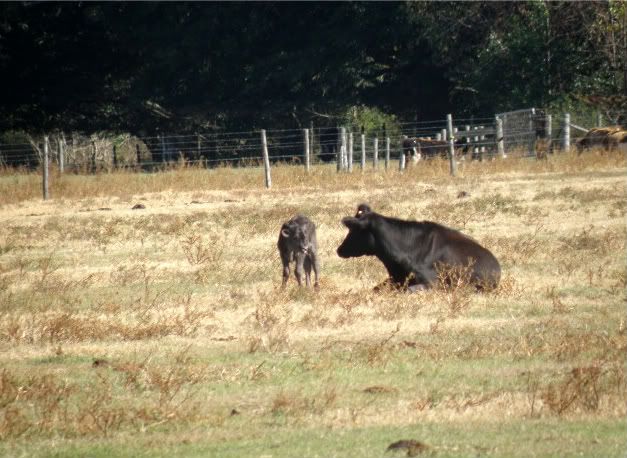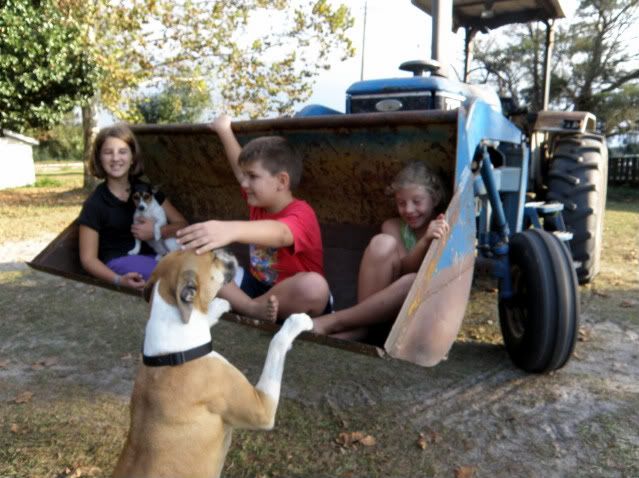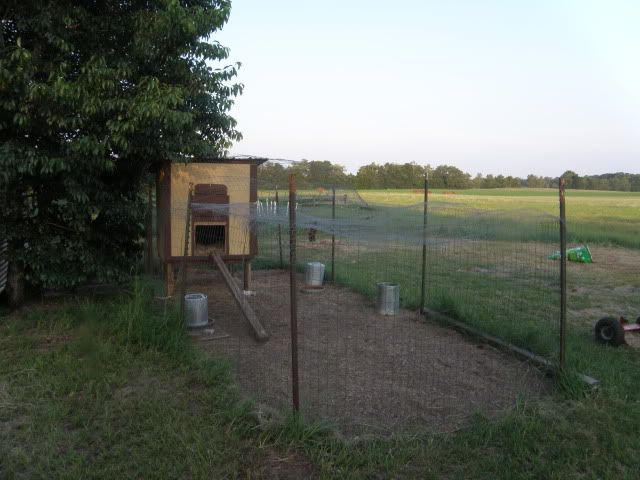
the coop.
I do not have boyz in zee hood - I have girls in the coop instead.
Very girly girls at that.
Well, except for the Rooster but he is way out numbered and just has to live in a house where all the ladies like their creature comforts and he must fit in somehow!
My daughter in law and I looked at scads of designs for coops and in the end we just drew up our own plans on a napkin and just went from there. The house is plywood with a tin roof with a 3 inch gap for ventalation at the top of the walls. It is on stilts to protect from ground predators and is surrounded on all sides and above with chicken wire to help keep out hawks,owls, skunks and coyotes.
It has a front door which opens just like a house door with a smaller opening built into it for the hens to access the coop. A small sliding door is suspended over that opening and held with a spring hook. It stays open most of the time except for the rare freezing night where I shut it to help seal in more heat.
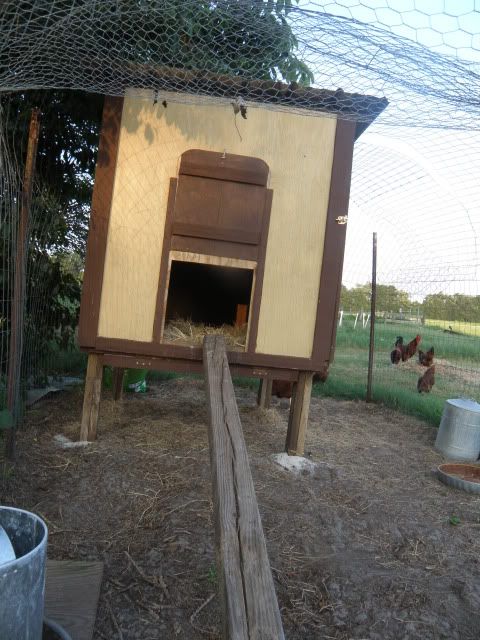
The back side of the coop has a hinged door that open upwards like the hood of a car so I can take out the nesting crates for easy cleaning. The floor also is hinged and drops downward at one end so the old hay and manure (and feathers!) can be raked directly on to the ground and out of the coop onto a compost pile nearby.
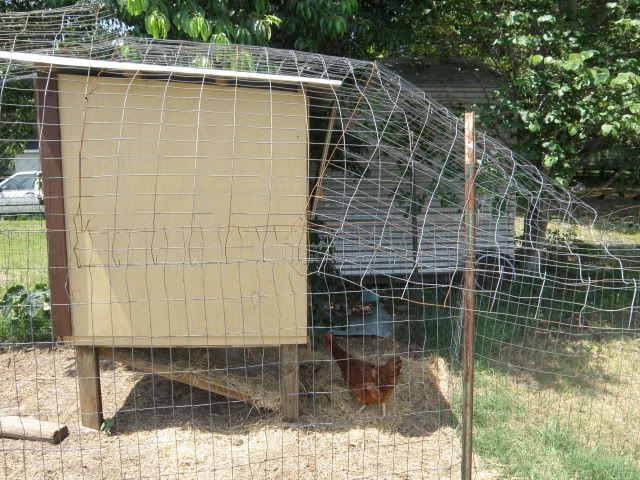
This winter I am trying something I learned from an old man who kept chickens up North where it got really cold. It is called the deep litter method.
The deep litter method is low-maintenance, and it keeps hens warm through winter as the litter and manure slowly compost and release heat into the hen house. You start with a clean house and about 4 inches of litter (hay, straw, wood shavings, or a mix) in the early fall. Add more litter throughout the season as needed to keep the bedding fairly dry and clean. By winter, the litter should be about 8 to 10 inches deep. It will be composting nicely and giving off heat. The chickens’ scratching will keep it aerated and turned, especially if you throw scratch grains in the coop for them, but you can give it a turn with a pitchfork and that works too. There is suprisingly no odor, I guess due to the cold temperatures and the decompsing. But it mainly just smells like hay.
So today I pulled out the crates that I use as nesting bins. Mine are actually milk crates instead of wooden boxes which I prefer because they are easy to clean.
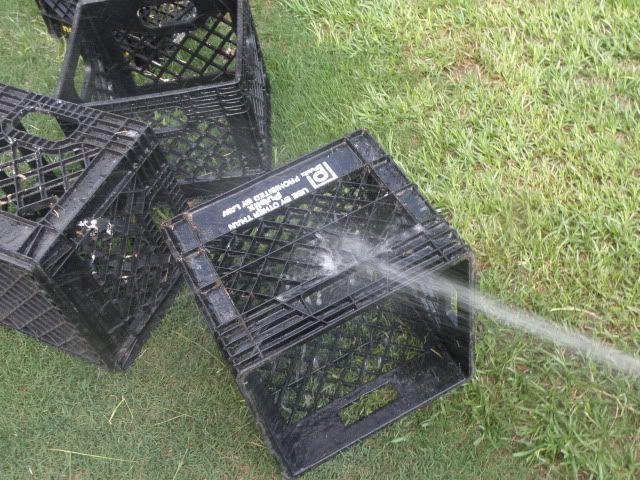
I turned over the hay that has been building since late September and added a layer of Diatomaceous earth, a white powdered rock that keeps mites and ants away. Then a fresh layer of sweet smelling hay about 4 inches thick.
The chickens will walk around the floor of the hen house some and usually share one nesting box for laying no matter how many you give them.
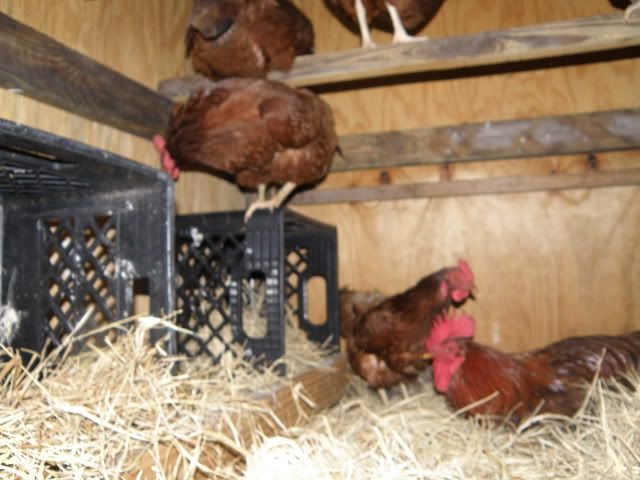
Some of them ignore the nests you provide and make their own.
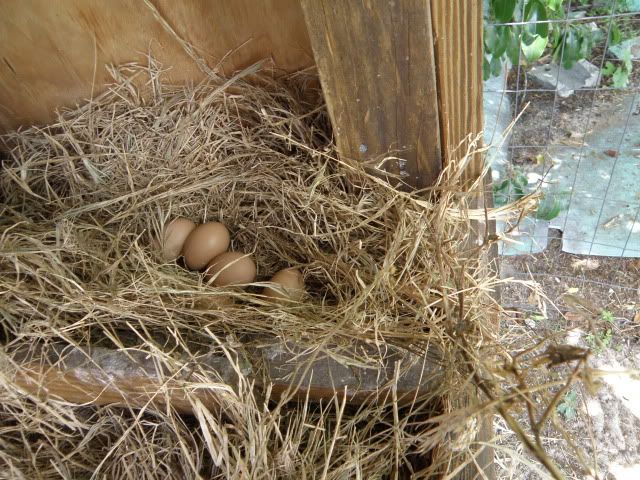
But most of all they like to perch on the wooden slats built above the floor, nearer the roof. Since heat rises, it is warm up there and they feel safer "perching" while they sleep.
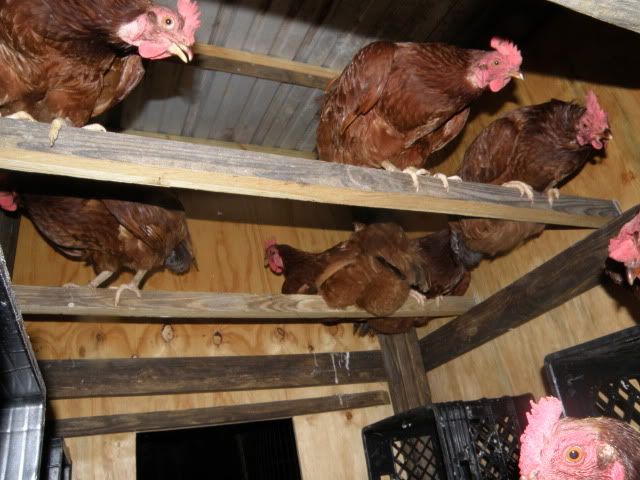
So the hen house is ready.
Winter can come now.

